Flights to Hawaii have always been a dream, but recent news surrounding the Boeing 737 MAX has left some travelers again questioning their plans. The aircraft’s engines are under new scrutiny following two bird strike incidents in 2023 that caused smoke in the cockpit on Southwest Airlines flights and have spurred FAA review. With airlines like Southwest, United, and Alaska Airlines relying heavily on these planes for Hawaii routes, it’s worth exploring what this means for travelers.
Understanding the Issue with the 737 MAX.
The Federal Aviation Administration plans to convene a review board in the coming weeks to evaluate safety concerns related to the LEAP-1B engines on Boeing 737 MAX aircraft. This follows incidents on Southwest Airlines flights in which bird strikes caused significant engine damage, resulting in smoke in the cockpit. The FAA is working closely with Boeing, its engine manufacturer, and the European Union Aviation Safety Agency (EASA) to address the issue.
Boeing has stated, “We are working with the authorities that are investigating these incidents. We continue to follow regulatory processes to properly address potential issues and ensure the continued safety of the global fleet.”
Southwest Airlines emphasized that it has already notified flight crews about the potential effects of bird strikes and reiterated the importance of following established safety procedures as part of its ongoing pilot training. The airline also confirmed it is collaborating with manufacturers and regulators to identify a permanent solution.
CFM, the engine manufacturer, has stated that the engines “performed as designed.” Nevertheless, the FAA is considering temporary procedural changes for pilots during takeoff until Boeing develops a permanent fix. This could potentially delay certification for the remaining 737 MAX 7 and 10 models, which will be important on Hawaii routes.
While these incidents are extremely rare, they have reignited concerns among some travelers. As one frequent flyer, Janet K., shared with us, “I’ve been watching this plane’s ups and downs for years, and every new issue feels like a step backward. It’s unsettling.”
Despite this renewed scrutiny, airlines assure passengers that the 737 MAX remains safe, and the aircraft continues to operate thousands of routes, including countless Hawaii ones.
How does this affect airlines flying to Hawaii?
The 737 MAX plays a crucial role in connecting mainland travelers to Hawaii, especially for carriers like Southwest, United, and Alaska Airlines. Each airline has adapted this aircraft for a wide variety of Hawaii routes, ensuring greater accessibility to the islands. The widespread use of the 737 MAX underscores its importance in Hawaii’s travel ecosystem.
Southwest Airlines relies heavily, if not exclusively, on the 737 MAX 8 for its Hawaii service. Southwest’s competitive edge in the Hawaii market has long hinged on the efficiency and range of this aircraft. Any disruptions tied to the scrutiny of the LEAP-1B engines could impact Southwest’s ability to maintain its Hawaii-focused operations.
United Airlines operates both the 737 MAX 8 and MAX 9 on Hawaii routes, leveraging these aircraft for mid-capacity and secondary markets. However, United’s larger hubs, including Los Angeles, San Francisco and those further afield, often see deployment of widebody aircraft like the Boeing 777 or 787 to accommodate higher demand and longer range. This mix of narrow-body and widebody aircraft provides United with some flexibility, allowing it to mitigate potential challenges posed by the scrutiny of the MAX fleet.
Alaska Airlines primarily uses the 737 MAX 9 for its flights to Hawaii, offering a modern, efficient experience for travelers from West Coast cities. Alaska’s use of the MAX on these routes is central to its Hawaii strategy, and like Southwest, any operational adjustments stemming from the ongoing investigation would require careful planning.
American Airlines, Delta Air Lines and Hawaiian Airlines do not fly 737 MAX aircraft on Hawaii flights at this time.
All carriers are closely monitoring the situation, prioritizing passenger safety while maintaining operational reliability. While the investigation has not resulted in disruptions so far, they are awaiting the outcome of the FAA’s review. For now, passengers can expect services to consistent, though flexibility and monitoring of updates is always advisable.
The continuing role of widebody aircraft in Hawaii travel.
Widebody aircraft offer a compelling option for travelers exploring other choices. Unlike narrowbody planes like the 737 MAX or Airbus A321neo, widebody jets are larger, more spacious, and designed for long-haul travel. Airlines such as Hawaiian Airlines, Delta Airlines, American Airlines, and United Airlines deploy widebody planes for some of their Hawaii routes.
Flying widebody aircraft also comes with practical advantages, such as more comfortable cabins, making them ideal for crossing the Pacific on routes where they are available.
Widebody aircraft including the Boeing 767, 777, 787, or Airbus A330 are frequently seen at Honolulu and Maui airports. The airlines, other than Alaska and Southwest, operate these planes on key routes, ensuring passengers have a choice if they prefer the comfort and space of a widebody jet.
As Annie L., a longtime visitor to Hawaii, put it, “I’ll always book the A330 when I can. The comfort makes such a difference, especially on longer flights.”
If you’re concerned about flying narrow-body planes, focusing on routes served by widebody aircraft is a simple way to ease those worries. Our guide to widebody flights to Hawaii offers tips on identifying these options.
A comparison: narrow-body vs. widebody aircraft.
Narrow-body aircraft, such as the 737 MAX and A321neo, have become the de facto workhorses for Hawaii flights. They allow airlines to expand service to secondary airports and offer nonstop services to and from smaller cities. These planes are more fuel-efficient and cost-effective, enabling reasonable fares that make Hawaii more accessible.
In contrast, widebody planes are reserved for high-demand Hawaii routes, such as those from major hubs including Los Angeles, San Francisco, Seattle, and beyond. Widebody jets carry more passengers and cargo, making them ideal for peak travel periods such as the holiday travel season which starts next week. They are also found on Hawaii flights from the Midwest, South, and East Coast.
Ultimately, the choice between narrow-body and widebody flights depends on your priorities and location. If comfort is key, widebody aircraft are the way to go. For shorter flights or direct neighbor island flights, narrow-body options may still be the most practical choice.
What Hawaii-bound travelers can do now.
If you’re flying to Hawaii in the near future, there are steps you can take to stay ahead of this situation. Checking your aircraft type before booking is a good starting point. Many airlines display this information during the booking process, and tools like Google Flights make it easy to verify the plane being used for your flight.
Monitoring flight updates is also important. Airlines are proactive about notifying passengers of schedule changes or delays, particularly those related to maintenance or inspections. Staying informed will help you adjust your plans quickly if needed.
Flexible booking options can make a big difference. Many airlines offer no-change-fee policies, which give you more freedom to modify your travel plans without extra costs.
Exploring widebody alternatives is another option. Routes operated by widebody planes may provide added comfort, especially for those who feel uneasy about or dislike flying narrow-body aircraft.
As John M. noted, “It’s all about knowing your options. Hawaii is worth the effort to plan a little more carefully.”
Final thoughts on the 737 Max controversy.
This may seem daunting, but at least at this point it’s unlikely to cause disruptions for most Hawaii-bound passengers. Airlines continue to prioritize safety, and the FAA’s scrutiny reflects the aviation industry’s commitment to resolving issues proactively.
By staying informed as well as exploring alternatives including widebody flights, you can ensure a stress-free journey to Hawaii. Whether you’re flying narrow-body or widebody, the Aloha State awaits!
Let us know in the comments how you feel about flying narrow-body to Hawaii or if you have ever switched to widebody jets for comfort or peace of mind. Your insights could help others with their travel plans.
Get Breaking Hawaii Travel News
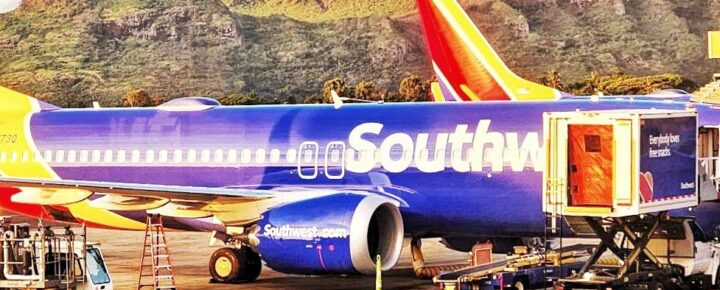
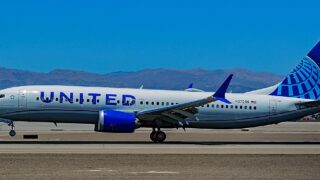
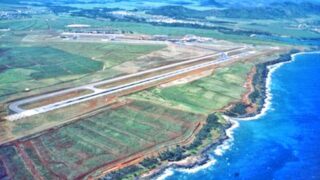
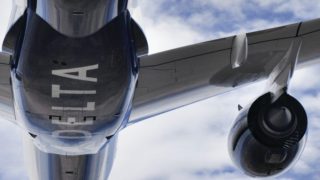
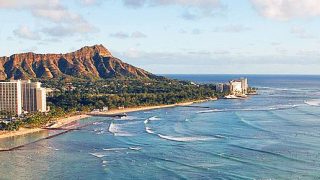
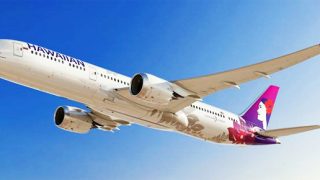
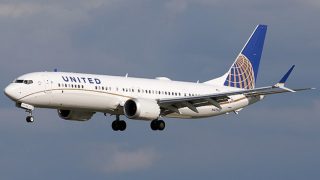
When I first went to Hawaii I had a choice of narrow body Aloha 737 or wide body Hawaiian 767. Having recently flown 5+ hours cross country in a 737 I went with the roomier Hawaiian plane. Sorry Aloha.
Sorry Aloha? They went out ofpasegner service decades ago. Duh!
Aloha stopped passenger service in 2008, that’s 16 years, not decades. So again, sorry Aloha.
Well, Hawaiian Air underwent the pain of having all of its Airbus A321s out of service for months as they dealt with engine problems. Now the other guys have to deal with scheduling issues. It is unfortunate. Keep in mind it is not Airbus or Boeing that makes the engines!
Bird strikes in jet engines! What a novel concept, said no one Ever!! This is something that short of killing off every bird around airports is never going to go away. Typically it is the bypass air that goes into the cabin to provide warmth so unless they can change how that air might be better filtered this will continue to be a possible issue that even other jet engines have experienced usually with a burnt oil smell.
I don’t know about the oil leaks but have heard that Boeing tests for bird attacks with their engines by releasing a big cage of chickens that get sucked into the engines to simulate a bird attack. Geese are larger so in that case I don’t know.
Boeing does Not manufacture the engines so they have very little to do with the actual certification process of the engines beyond what performance they expect out of the engines.
Sorry Don K but had a relative work for Boeing in Seattle at paine field location and he personally told me Boeing engineers do this test and I also saw this on a program on tv involving birdstrikes and how the airports control them. My airport uses cannon’s that are fired off daily so the birds don’t nest around the runways.